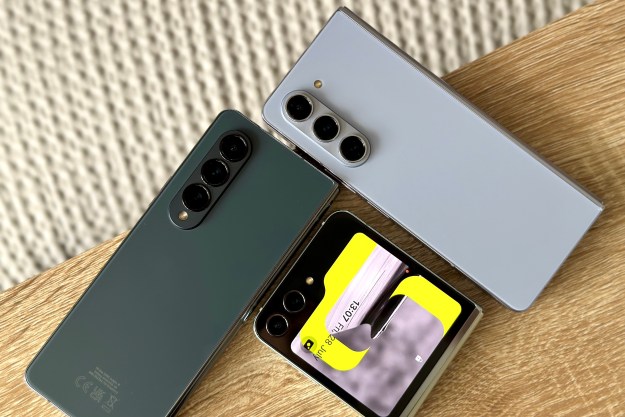I’ve lived happily in the Apple ecosystem for well over a decade, but as a technology enthusiast, I’m always curious about what’s happening in the larger mobile world. Hence, I’m always keeping an eye on what Samsung, Google, and other Android handset makers are up to. Every so often, something comes along that piques my interest enough that I entertain thoughts of switching platforms and seeing how the other side lives.
Such was the case with this week’s Galaxy Unpacked event. With the Galaxy Z Fold 4 and Z Flip 4, Samsung has demonstrated more than ever that foldable smartphones are ready for prime time. Both of Samsung’s new Z series phones are compelling in their own ways, with features that Apple hasn’t yet chosen to match.
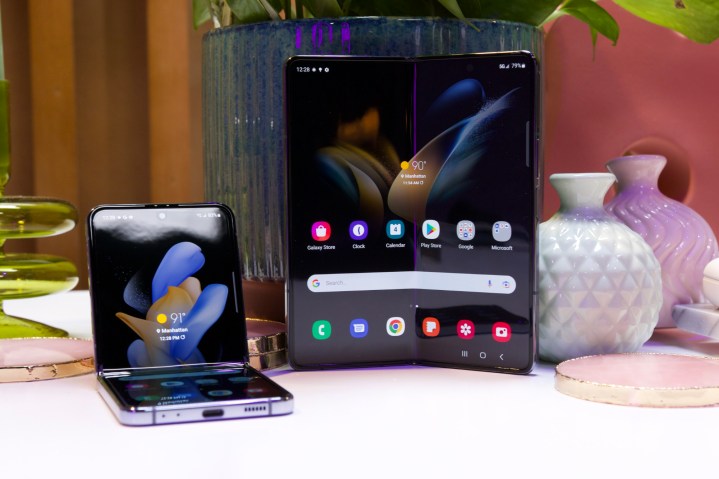
Is it enough to make me change sides? Maybe not, but Samsung’s latest releases have made things more tempting than ever before.
My long history with the iPhone
I’ve been an iPhone user since the first model came out in 2007, but before then, I had already used just about every other smartphone platform available. My first foray into the world of hybrid PDA and cell phones (they didn’t call them “smartphones” back then) was Qualcomm’s pdQ-1900 — a clunky affair that combined the capabilities of a Palm III with a CDMA smartphone. By the time the iPhone arrived, I was toting a Nokia E90 Communicator — one of the first precursors to today’s foldable smartphones.
When I watched Steve Jobs unveil the iPhone in January 2007, I was pretty skeptical about the platform. From the touchscreen keyboard to the lack of third-party app support, it seemed like a strange and limiting device. However, when I finally got my hands on one a few months later, I was quickly won over. And I haven’t looked back since.
In the intervening years, I’ve played with various Android phones, from the original Nexus One in 2010 to a Google Pixel 6 that I still have on hand for research and testing. There have always been things I liked about Android, and in the early days, it seemed clear that Apple and Google could both learn a lot from each other. However, while those devices were fun, none of them were enough to convince me to abandon whatever iPhone I was using at the time.
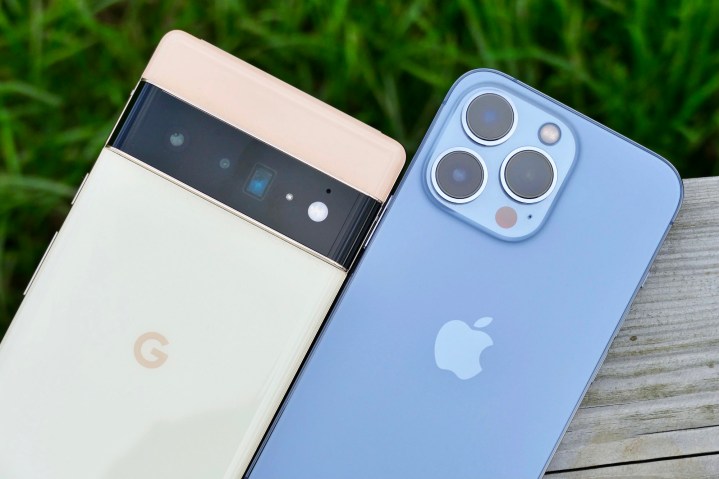
That’s become even less tempting as technology has evolved. Nowadays, one rectangular slab of glass and plastic is about the same as any other. Handset makers compete mainly by leapfrogging each other in areas like camera specs and screen quality, but for most folks, we’ve long since passed the threshold of more than enough in these areas.
When it comes to the iPhone versus the rest, that leaves the operating systems and apps as the most significant differences. There are inevitable tradeoffs between Android and iOS, but one isn’t inherently better than the other these days; they’re just different, each with its own benefits and limitations.
Why the Z Fold 4 has me so tempted
Hardware and software work closely together, though, and that’s what I find compelling about Samsung’s latest foldable phones — particularly the Galaxy Z Fold 4.
This isn’t just about having a folding phone. After all, folding smartphones aren’t an entirely new idea. It’s developing the underlying software to make the most of the phone’s capabilities, and that’s what Samsung appears to have focused on this year. In fact, the hardware in the Z Fold 4 doesn’t differ all that much from last year’s model, but the software improvements make this phone a whole new ballgame.

When showing off the Galaxy Z Fold 4 during its Galaxy Unpacked, Samsung focused almost entirely on the app experience, which was stunning. Thanks to Android 12L, designed explicitly with large-screened folding phones in mind, and close partnerships with Microsoft and Google, the Z Fold 4 finally blurs the line between a smartphone and a tablet.
The entire user interface has been significantly polished to take advantage of the larger, unfolded 7.6-inch screen, with a Taskbar that offers a PC-style layout and new multitasking swipe gestures. The split screen mode lets you more easily run two apps side-by-side and even drag-and-drop things like links and photos between them. It also works with the S Pen for drawing and taking notes.
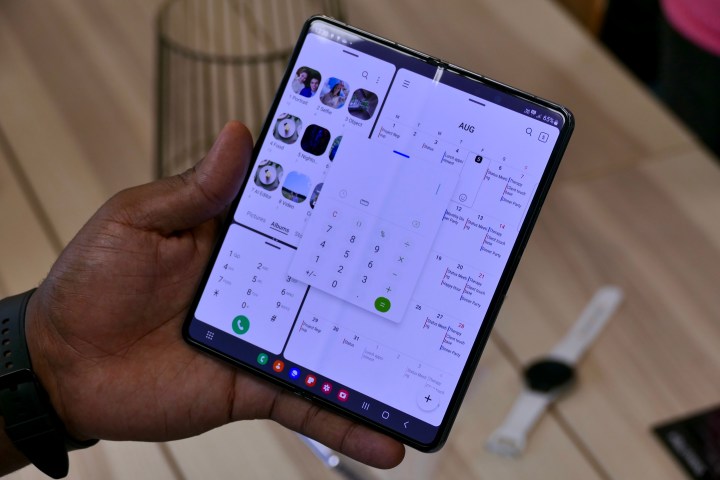
Samsung also showed off how the Z Fold 4 can be used with conferencing apps like Google Meet and Microsoft Teams to co-watch videos and share whiteboards. Samsung and Microsoft have also worked together to deliver the full Office suite experience in a way that’s tailored to both of the Z Fold 4 screens. Outlook can show email message snippets on the cover screen that can be opened into a full-page view on the main screen. Users can easily view multiple Word, Excel, and Powerpoint documents side by side and seamlessly move information between them.
The larger screen is also great for gaming and video playback in a way that even the largest traditional phones can’t match. Flex mode allows hands-free video experiences in apps like Netflix and YouTube since the folding design lets the phone work like a natural stand. A Flex Mode Touchpad on the bottom lets you control video playback without getting in the way of whatever you’re watching.
The ecosystem challenge
Twelve years ago, when I took a Nexus One to Apple’s iPhone 4 launch event (alongside my trusty iPhone 3GS, of course), there wasn’t nearly as much to tie users to the iPhone. The iPad was barely two months old, and that was the year the operating system was rebranded to “iOS.”
A lot has changed since then. Today, many iPhone users have other Apple devices like MacBooks, iPads, HomePods, AirPods, and Apple TVs — not to mention the Apple Watch, which remains joined at the hip to the iPhone. Apple devices work well together and form enough of an ecosystem that switching isn’t nearly as simple a question as it once was.
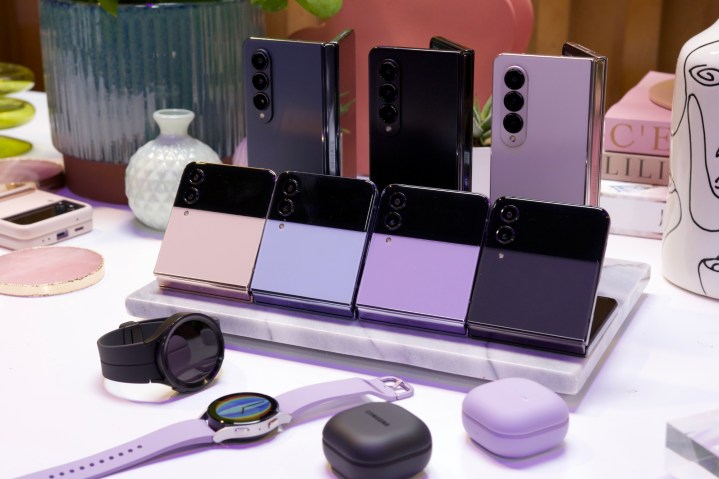
Samsung may be late to the party, but it has also been building an ecosystem of its own and tying everything together like never before. Unlike Apple, Samsung also has the advantage of having its fingers in many more pies, from televisions to refrigerators. Even though Samsung has always offered a broad range of consumer electronics, three years ago, it would have been a stretch to call that an ecosystem. However, as Samsung demonstrated today, its Galaxy smartphones, Galaxy Buds, and Galaxy Watch can work together as seamlessly as the iPhone, AirPods, and Apple Watch. Samsung adds an extensive lineup of televisions into that mix as well.
Google has been doing something similar with its Pixel devices, creating the foundations in Android that are gradually growing into a broader ecosystem that won’t be tied to a single vendor. Sure, Apple gets points for having accomplished many of the same things years earlier, but that’s no reason to discount what these newer players are accomplishing.
Still, switching platforms isn’t something I can take lightly with multiple Apple devices and a home that’s been fully tricked out with HomeKit technology. But Samsung’s Z Fold 4 has got me thinking.
What about Apple’s foldable plans?
There’s little doubt that Apple has a foldable iPhone in the research and development stages. While there’s no guarantee we’ll ever see one, I strongly feel it’s more a matter of when we’ll see Apple’s foldable iPhone than if we’ll see one at all.
One key difference between Apple and Samsung is that Samsung doesn’t mind failing more publicly. The original Galaxy Fold was rightly pilloried for being a mess. It was fragile, prone to hinge and screen problems, and clearly not ready for anybody except those who wanted to live on the bleeding edge of technology.

However, it was also a sign of things to come. It may have bordered on a prototype, but it was clear that Samsung wasn’t giving up. What we see today in the Galaxy Z Fold 4 results from that very public trial-and-error process, and anybody paying attention knew Samsung would eventually turn that into a home run.
Meanwhile, Apple wouldn’t dare release anything less than a fully polished foldable iPhone. It’s not Apple’s style to release prototype devices. Depending on how Apple approaches it, the first foldable iPhone could be an expensive “first-generation” device like the original Apple Watch, HomePod speaker, or even the first 2007 iPhone. However, even in those cases, Apple releases a device with more limited capabilities to ensure the features they do offer work as well as possible.

Still, Samsung’s latest Z series smartphones demonstrate that Apple is woefully behind the curve here. To be fair, market research likely suggests that there isn’t yet much mass-market demand for foldable smartphones, but that didn’t stop Apple from releasing the Apple Watch and HomePod, both of which were arguably much more niche devices. If reports are accurate, it’s also about to do the same thing with its first augmented reality headset.
Of course, with Apple selling hundreds of millions of iPhones each year, a foldable likely isn’t much of a priority. However, it’s clear that Apple’s competitors aren’t sitting still, and it says something that Samsung’s latest Z Fold 4 is enough to seriously tempt a loyal 15-year iPhone enthusiast like me to change sides.
Editors' Recommendations
- The Galaxy Z Fold 6 and Flip 6 release date just leaked
- iPhone SE 4: news, rumored price, release date, and more
- I’ve had the iPhone 15 Pro for six months. Here’s why it’s still amazing
- 5 phones you should buy instead of the iPhone 15 Pro Max
- Your iPhone just got a new iOS update, and you should download it right now




